 |
|
- Does the company need a data warehouse ...or even a data mart?
- What are the business objectives?
- Where do I get the data from?
- Perform cost/benefit analysis, project estimation and risk
assessment
|
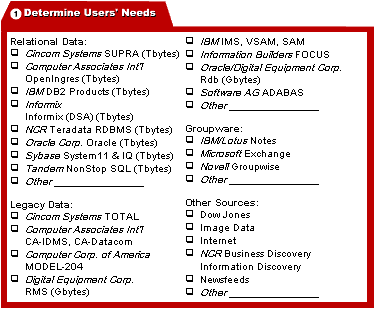 |
|
|
 |
|
- Which database servers do
we already have?
- Determine cost,
interopability and staff
training considerations.
- Determine DBMS server platform
based on Return on
Investment (ROI)
|
 |
|
|
 |
|
Where should the
data warehouse or data mart be
housed?
- Which hardware platforms
do we already have?
- Determine cost,
interopability and staff
training considerations.
- Determine hardware based
on Return on Investment
(ROI).
|
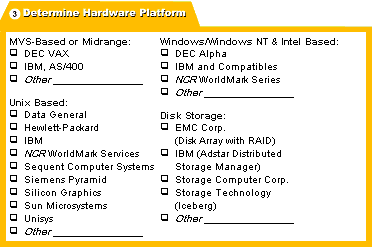 |
|
|
 |
|
Building an
Information Model
- How do I use a data model
to express relationships
between the data?
- Resolve access and usage
issues.
- Determine the logical and
physical design of the
data warehouse or data
mart.
|
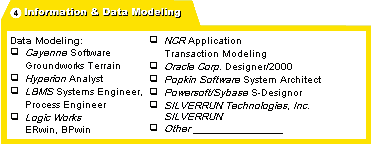 |
|
|
 |
|
How do I keep
track of what means what, who can
access it and how it will be
accessed?
- Build a repository.
- Determine the business
user's view of the
metadata repository.
|
 |
|
|
 |
|
How do I...
- Extract
- Cleanse
- Scrub
- Reconcile
- Aggregate
- Summarize
...data from various sources for
the data warehouse or data mart?
|
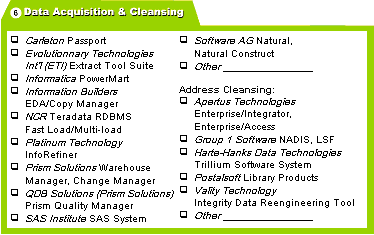 |
|
|
 |
|
How do I build
the data warehouse or data mart?
- Transform the data.
- Transport the data.
- Populate the data
warehouse or data mart.
|
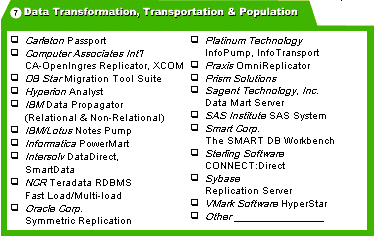 |
|
|
 |
|
How do I connect
the source data to the target
data warehouse or data mart?
- Ongoing connection
- Direct data access
|
 |
|
|
 |
|
How do I:
- Implement a prototype
with user involvement?
- Develop applications?
- Use query and reporting
tools?
|
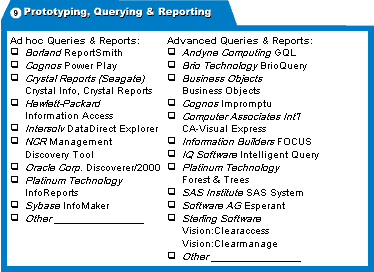 |
|
|
 |
|
How do I find
patterns in the data?
- How can those patterns be
used for revenue growth?
- How can tools be used to
further identify patterns
in the data warehouse or
data mart?
|
 |
|
|
 |
|
- How can users analyze the
data?
- How can the neccessary
number of dimensions be
determined?
- How can users see the
data represented in
multiple dimensions?
- How can they use the OLAP
tools?
|
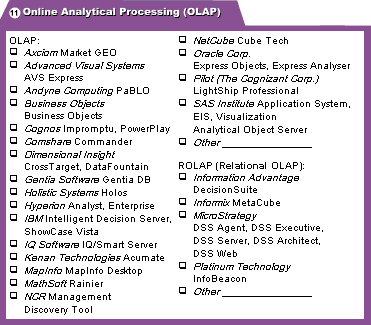 |
|
|
 |
How can I
provide security, backup,
recovery and the necessary
capabilities for a production
data warehouse or data mart?
- How can resources be
allocated best?
- How can the growth of the
data be accommodated?
- How can everything be
kept running smoothly?
|
 |
|